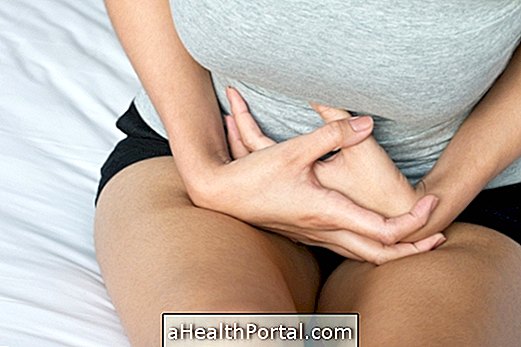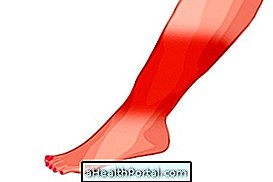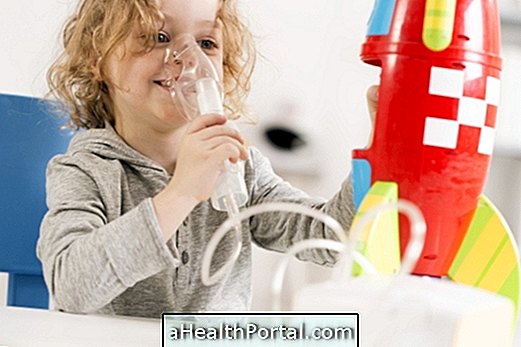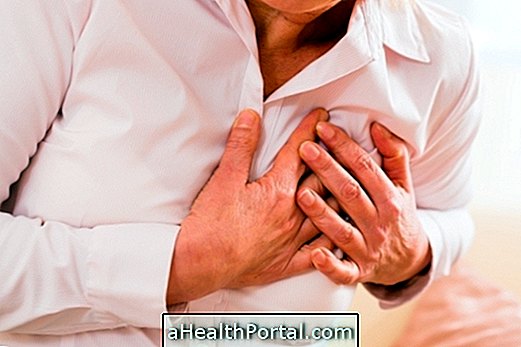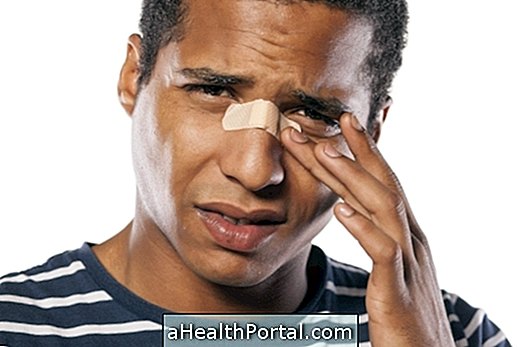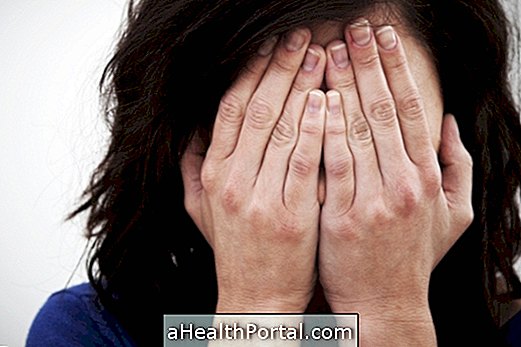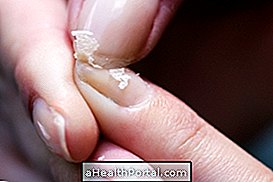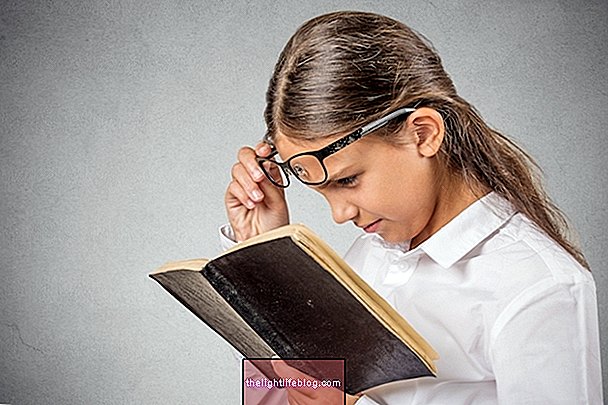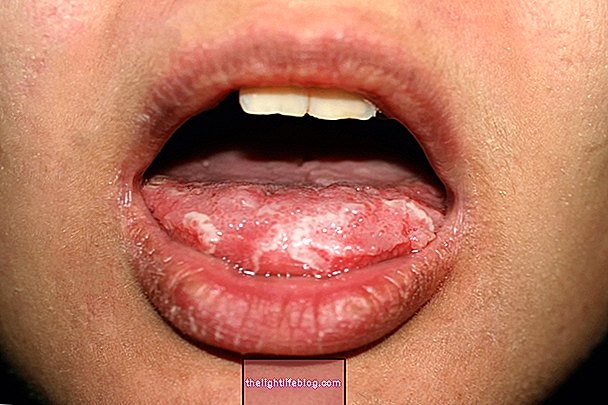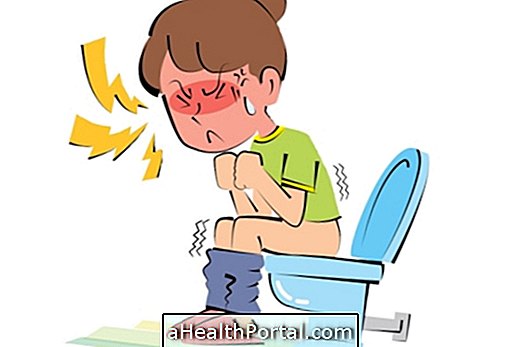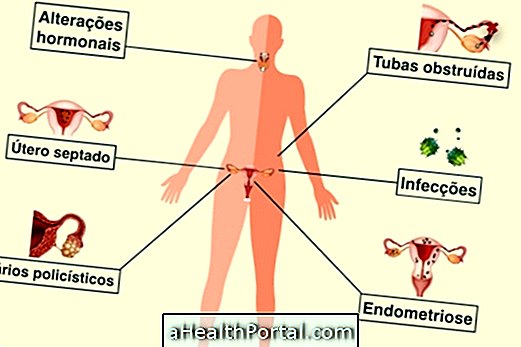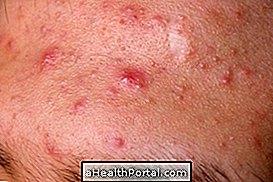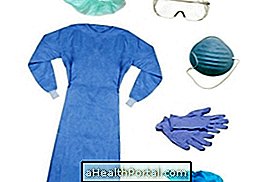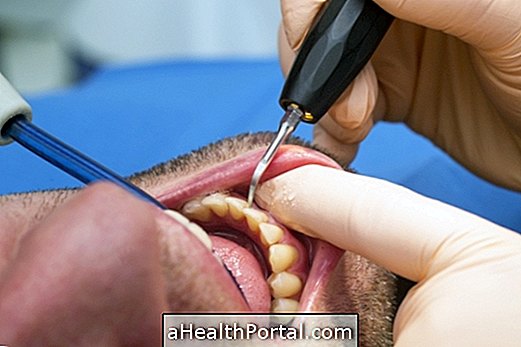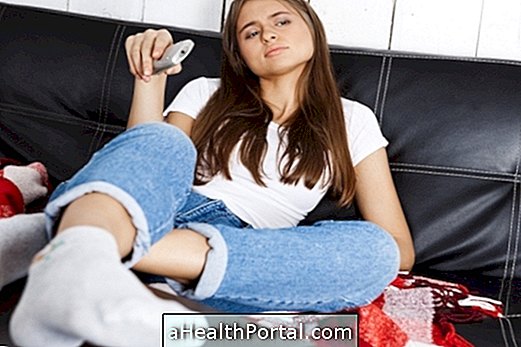The blisters are small pockets of fluid that arise in the skin due to friction, burn, infection or a blow to the site. Depending on where they come from, blisters can interfere with various daily activities and can therefore become a major nuisance, especially when they arise on the foot and make walking or shoeing difficult.
Although bubble bursting seems to be the quickest and most practical solution to relieve discomfort, it should never be an option, because when the bubble burst, a small opening is created in the skin that allows bacteria to enter, resulting in a infection.
So the best way to treat a blister in the foot usually is to relieve the pressure in the place and try to keep the blister intact, since it disappears by itself in a few days.
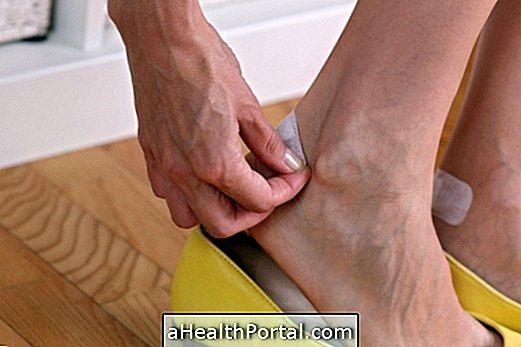
How to treat the foot bubble
The best way to treat a bubble in the foot is to reduce the pressure in place and prevent the bubble from bursting. So some tips include:
- Do not wear tight shoes;
- Put a band aid on the bubble to avoid friction if you need to wear a closed shoe;
- Walking barefoot whenever possible, since sock can cause friction and worsen pain;
- Pass aloe vera gel or aloe vera cream in place to reduce inflammation.
However, if the bubble is very large and causing a lot of discomfort, it is possible to drain the liquid a bit, however, one must use the correct technique to avoid an infection in the place.
How to Drain a Bubble Correctly
Drainage of the blister should only be used in cases where other care does not help relieve the discomfort and ideally should be done by a nurse or other health professional.
The step-by-step to do the drainage is:
- Wash hands and feet with soap and water;
- Spent alcohol in the bubble with the help of a piece of cotton;
- Take a needle sterilized or disinfected with alcohol;
- Make a small hole in the bubble, using the needle;
- Let the liquid leave the bubble, but do not apply pressure;
- Apply an ointment with fusidic acid or another antibacterial substance on the site;
- Cover the blister with a gauze or sterile dressing.
After drainage, it is even more important to maintain hygiene care, such as keeping the place always protected with a sterile dressing and avoiding the accumulation of liquid in the dressing.
Why not burst the bubble
Ideally the blister should not be blown because it increases the risk of skin infection. Usually, the bubble is produced by the body to protect skin tissues that are inflamed. Thus, the bubble prevents strokes in place and also protects against the entry of viruses and bacteria that can cause an infection.
How to prevent bubbles
Most bubbles are caused by a combination of pressure and friction, so avoid all factors that may contribute to this combination. Some simple tips that help prevent bubbles include:
- Do not wear tight or wide shoes;
- Avoid wearing synthetic stockings;
- Do not wear shoes that are not suitable for activities that lead to repetitive movements of the feet, such as running;
- Do not wear shoes or socks with damp feet;
- Avoid wearing new shoes for a long time;
- Moisturize your feet well with cream before bed.
By following these care it is possible to not only prevent the appearance of blisters but also protect the feet, which helps prevent the feeling of swollen and tired feet at the end of the day. But doing a good foot scrub and a foot massage before bed is a good idea to improve blood circulation.
Here are the steps to make a great foot massage in the following video:

